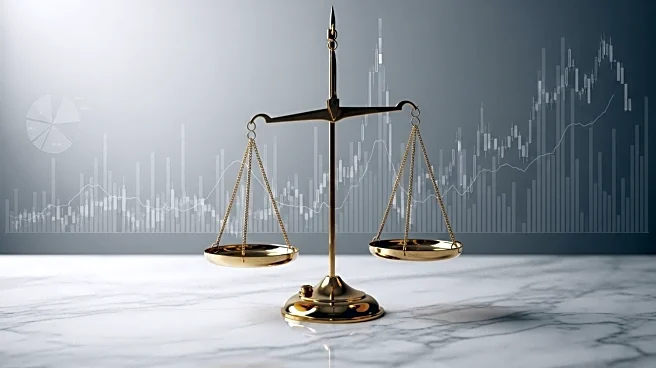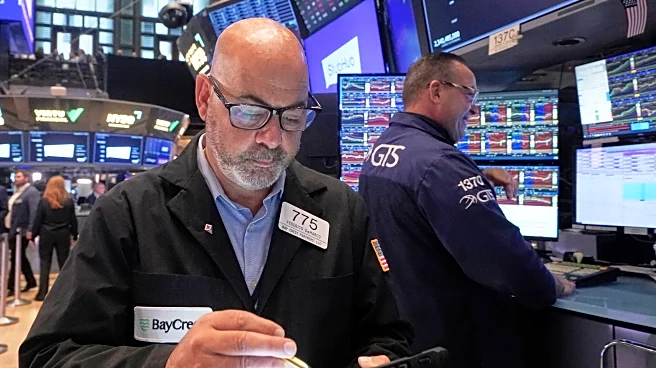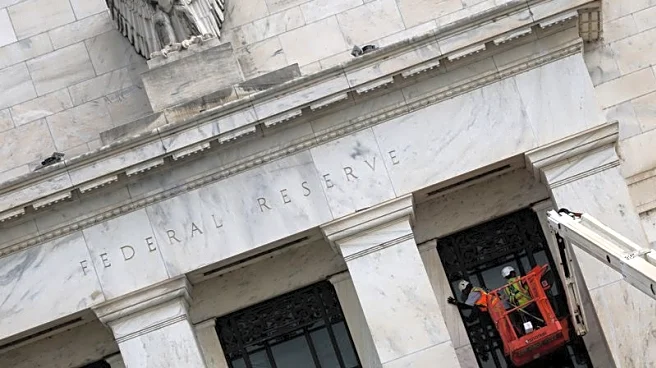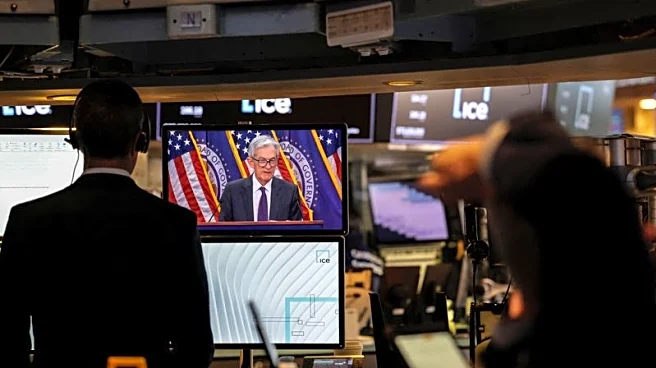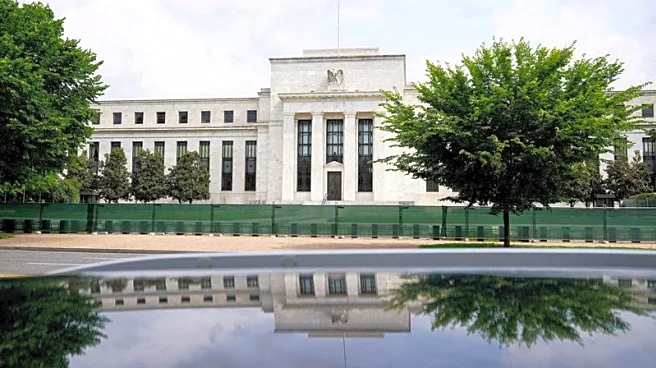What's Happening?
JPMorgan has utilized artificial intelligence to analyze the Federal Reserve's recent decision to cut interest rates, revealing a notably dovish stance not seen since 2021. The Federal Reserve's decision to reduce rates was initially met with mixed reactions from the market, as Chair Jerome Powell described the move as a 'risk management' cut. However, the AI analysis conducted by JPMorgan's natural language processing model interpreted the Fed's statement and Powell's remarks as significantly more dovish than previous meetings. This interpretation was shared with clients, suggesting that the Fed anticipates two more rate cuts in the near future, up from the one previously projected. The stock market responded positively, with futures contracts tied to the S&P 500 and Nasdaq-100 showing gains, and the Technology Select Sector SPDR fund rising by 1.4%.
Why It's Important?
The Federal Reserve's dovish stance, as interpreted by JPMorgan's AI, has significant implications for the U.S. economy and financial markets. A more accommodative monetary policy could stimulate economic growth by making borrowing cheaper, potentially benefiting businesses and consumers. However, it also raises concerns about inflation, which has been running above target for several years. The market's positive reaction suggests investor confidence in the Fed's approach to managing economic risks. Yet, the potential for further rate cuts indicates ongoing concerns about economic stability, particularly in the labor market. This development could influence investment strategies and economic forecasts, impacting various stakeholders, including businesses, investors, and policymakers.
What's Next?
The Federal Reserve's future actions will likely depend on upcoming economic data, particularly regarding inflation and employment. If new data suggests that lower rates are not necessary, the Fed may reconsider its dovish stance. Market participants will closely monitor these developments, as any changes in the Fed's policy could affect market dynamics and economic conditions. Additionally, the Fed's approach to balancing economic growth with inflation control will be a critical focus for investors and policymakers alike.


